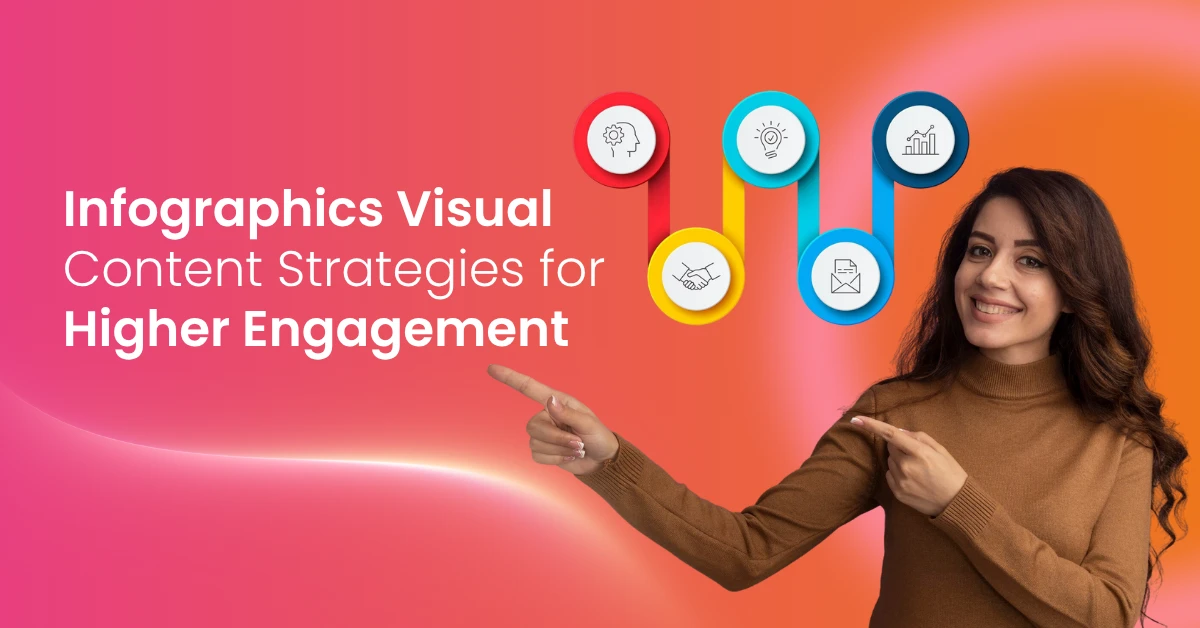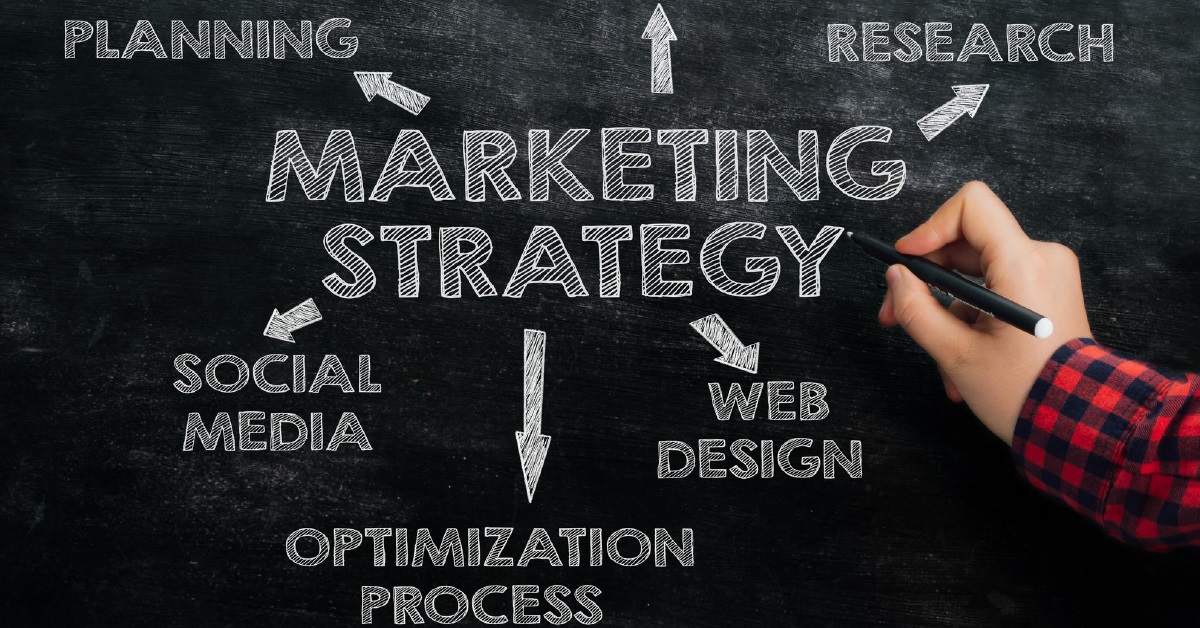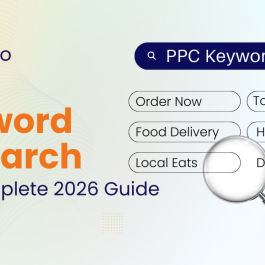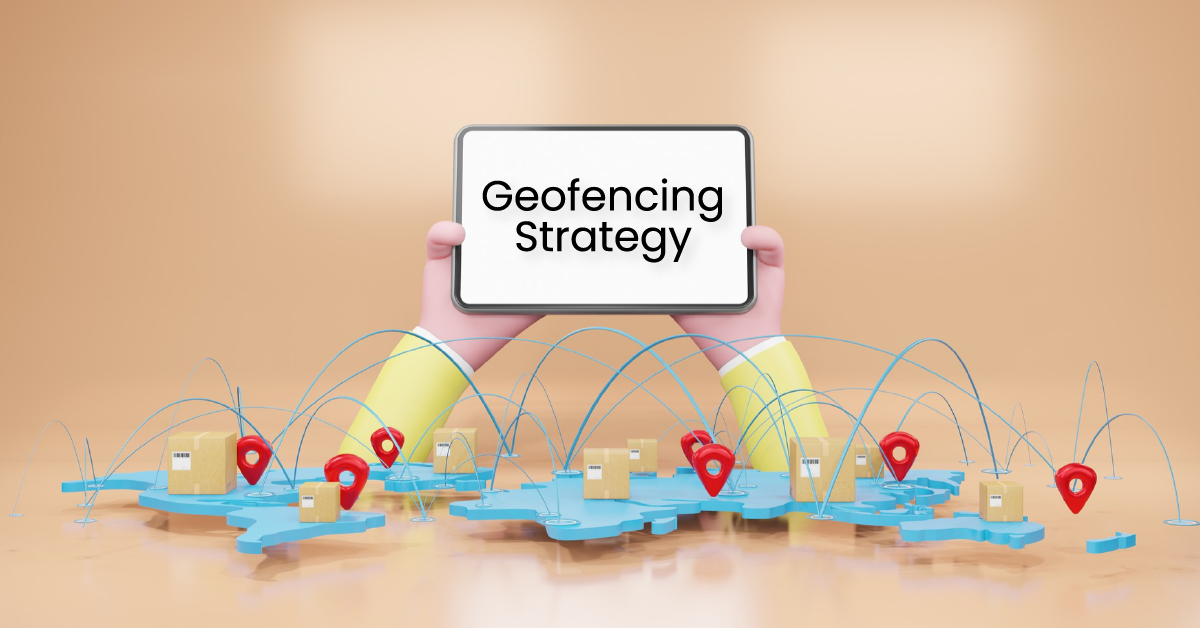6 min read

Visual content is very important in digital marketing. It makes complex data simple. It also helps boost audience engagement on social media platforms. Creating visual content like infographics, videos, and images leaves a strong impression. It also helps improve brand recognition. A good visual content strategy drives user engagement and brings leads. High-quality visuals, including strong graphic pictures, make emotional connections with the audience.
People process visuals 60,000 times faster than text. So, visuals are the fastest way to grab attention today. Visual content is very important in marketing. In fact, 56.2% of marketers say it is very important.
Table of Contents
Building an Effective Visual Content Strategy
A visual content strategy must match the overall marketing plan. This helps make the biggest impact and keeps things consistent. You must know what the target audience likes. This helps you create visuals and images they will like. Using social media platforms like Instagram and Facebook helps share content more. This also helps increase engagement.
Adding user-generated content and interactive parts boosts audience engagement. It also builds a strong visual identity. Making a style guide helps keep visual consistency across marketing channels. This also helps build brand recognition.
Creating Engaging Visuals That Capture Attention
Engaging visual content should look good and be easy to understand. It must fit the audience’s needs. Using data visuals and interactive parts helps make complex info simple. This makes it more fun and easy to remember. High-quality images and videos create emotional connections. They also share key messages well.
Infographics with true data build trust and get shared more. Visuals help people remember info better by up to 65%. This makes them a strong tool to catch and keep audience attention.
Visual Content Creation Tips for Brand Growth
Visual content creation means designing images, videos, and infographics. These must show the brand’s message and attract the audience. Using clear alt text and optimizing images for search engines helps more people see them. Adding the right keywords and keeping visual consistency makes the brand stronger.
Great visuals and product images make social media posts better. This raises engagement. Good visuals can also raise conversion rates a lot. People expect high-quality visuals when they shop online. So, visuals are key for marketing success.
Marketing Strategies That Boost Visual Performance
Good marketing mixes visual content, social media, and content marketing. This helps reach and engage the target audience. Keeping up with industry trends and making content about complex ideas shows you are a leader. It also raises engagement. Using social proof like user content and reviews builds trust.
Using predictive analytics in design makes content fit the audience better. Testing different content types shows which visuals work best. This helps make marketing efforts stronger.
Visual Content’s Role in Content Marketing
Content marketing means making and sharing useful, relevant content. This pulls in and keeps a clear audience. Visual content like infographics and videos makes complex ideas simple. It also raises engagement. Visual storytelling helps build emotional connections. This boosts user engagement. About 75% of consumers like visual content more than text.
Videos can raise conversions by up to 86% on landing pages. Using plain text alone works less well than mixing it with good visuals. Good visuals catch attention.
Boosting Audience Engagement with Visuals
Audience engagement is key for marketing success. Visual content helps drive it. Interactive parts like quizzes and polls raise engagement. They also create meaningful talks. Sharing visual content on social media helps reach more people. It also raises engagement. Tracking likes, shares, and comments shows how well it works.
Building a strong visual identity and keeping it steady builds trust. Interactive content helps build community. This makes engagement deeper and longer.
Strengthening Brand Visibility with Visuals
Audience engagement is key for marketing success. Visual content helps drive it. Interactive parts like quizzes and polls raise engagement. They also create meaningful talks. Sharing visual content on social media helps reach more people. Visual content links every post, video, and infographic to your brand.
Tracking likes, shares, and comments shows success. Building a strong visual identity and keeping it steady builds trust. Interactive content helps build community. This makes engagement deeper and longer.
Using Visual Content to Generate Leads
Getting leads is a main marketing goal. Visual content helps a lot. High-quality visuals and good infographics catch attention. They also raise audience interest. A digital plan with visual content helps raise user engagement and leads.
Social proof, like customer stories and user content, builds trust. It also helps convert more people. Clear calls to action tell users what to do next. This helps get more leads. Visual content’s power to engage and persuade makes it a strong lead tool.
Measuring the Success of Visual Marketing
Measuring success means watching key numbers like engagement, leads, and conversions. Tools help track website visits, social media actions, and user behavior. Regular checks show how content is doing. They also show where to improve. Changing plans based on data makes visual content work better. This raises user engagement.
Heat maps show clicks, scroll depth, and mouse moves. This helps find which parts of content work best. Tracking conversions from calls to action shows how well content leads to actions. This helps keep improving and winning in marketing.
Real-World Examples of Visual Content Success
Real-world success stories teach us how to make good visual content strategies. Case studies show how top campaigns raise engagement and leads. Looking at what top brands do shows best ways and what to improve. Sharing success stories helps marketers get better.
Learning from real examples helps make visuals that fit the audience. It also helps reach marketing goals. Using these lessons in your visual content plan can raise engagement and conversions.
Key Design Principles for Better Visuals
Design rules like simplicity, clarity, and consistency are key for strong visual content. Using clear and short visuals helps share complex ideas well. Adding interactive parts and animations raises engagement and user experience. Making sure content is easy to use and open to all helps reach more people.
Following these rules keeps visuals balanced and builds brand identity. Good design helps tell stories. This makes content more memorable and strong. It also helps get better marketing results.
Power of Interactive Visual Content
Interactive content like quizzes, polls, and games raises audience engagement. It also builds meaningful talks. These parts make complex info simple and fun. Adding social sharing and user content grows reach and builds community. Making a plan with interactive content brings more traffic and raises brand visibility.
Interactive visuals get people to join in. This builds stronger emotional links and helps people remember messages. This lively way turns watchers into active users. It also raises marketing success.
Visual Storytelling That Connects with Audiences
Visual storytelling uses images and graphics to tell a strong story. This story connects with the audience’s feelings. Using characters, plots, and settings makes the story deep. Adding interactive parts and animations keeps viewers interested. Staying true to brand identity and message builds trust.
Visual storytelling makes complex ideas easy to get and remember. By telling a brand story with visuals, marketers build strong feelings. This also drives loyal and active audience engagement.
Importance of High-Quality Images in Marketing
High-quality images are key for good visual content. They make sure pictures are clear and look good. Using sharp images made for the web helps pages load fast. It also makes pictures look great on all devices. Adding fitting images to infographics and other content makes info simple and nice. Keeping brand identity and message steady builds trust and recognition.
Spending on good visuals raises how the audience sees you. It also raises engagement. High-quality images are a big part of making strong visuals. They help marketing goals and lift brand presence.
Don’t Just Tell Your Story
Show It with Visuals That Convert.
Frequently Asked Questions (FAQs)
1. What are infographics visual content strategies for higher engagement?
These strategies use clear, simple graphics that tell a story and connect with the audience. They keep brand steady and work well on all platforms, including mobile. This helps boost sharing and engagement. A well-organized visual asset library keeps every design file easy to find for teams.
2. How can infographics improve my content marketing strategy?
Infographics make complex info simple with visual storytelling and main points. They raise social shares, organic traffic, and support your brand message. The best infographics use good stories and visuals to share messages clearly. A good text-to-image balance helps key points stand out.
3. Why is visual content marketing important for audience engagement?
Visuals catch attention faster than text. They make ideas simple, build feelings, and raise engagement with videos, interactive infographics, and high-quality images on many platforms. Creating good data visuals helps show numbers and stats clearly. Video content is liked by buyers because it shares info fast and well.
4. How do I optimize infographics for mobile devices and search engines?
Design for small screens with easy fonts and clear layouts. Use the right keywords, alt text, and SEO-friendly posts to get more views and organic traffic.
5. What role do interactive infographics play in boosting engagement?
They get the audience to join in and share. They help people remember messages better. They make visual content more fun and strong.
6. How can I maintain brand consistency across my visual content?
Use the same fonts, colors, styles, and images. Follow a visual content plan and style guide. This builds trust and brand recognition.
7. What metrics should I track to measure the success of my visual content?
Watch social media likes, shares, comments, website visits, time spent, conversion rates, downloads, and use heat maps to find good visuals. Tracking downloads shows how much people like infographics and whitepapers. Check conversions if the infographic has a call to action to see if it works well.
8. How can user-generated content enhance my visual content marketing efforts?
It adds realness and social proof. It builds trust, spreads content faster, and grows a strong brand group with real customer photos and stories. User-generated content is one of the best ways to get viral and build trust. Offer an embed code for the infographic to help sharing and reach.
Published: October 29th, 2025










